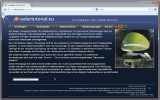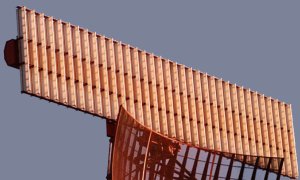Chapter: “Secondary Radar Technology”

Figure 1: Preview of internet representation

Figure 2: Large Vertical Aperture Antenna

Figure 1: Large Vertical Aperture Antenna
Radar was born in the due to the pressure of war. The need to detect “hostile” aircraft led to a vast investment in intellect and money to develop RADAR. Classical Radar (now called Primary Radar) by definition is a non co-operative technology, that is it needs no co-operation from the “Target” being detected. Why do we need a different system then?
As well as seeing “hostile” aircraft it soon became apparent that Radar was a good tool to see „friendly” aircraft and hence control and direct them. If the “friendly” aircraft is fitted with a transponder (transmitting responder), then it sends a strong signal back as an “echo”. An active also encoded response signal which is returned to the radar set then is generated in the transponder. This proved very useful for the military in seeing their own aircraft clearly. In this response can be contained much more information, as a primary radar unit is able to acquire (E.g. an Altitude, an identification code or also any technical problems on board such as a radiocontact loss ...).
The objectives of this chapter of the homepage “Radar Basics” are to indicate the principles of the operation of Secondary Surveillance Radar (SSR). Firstly, the functional block diagram of the SSR (Mode A/C) system will be described, including both the Up Link formats and the Reply Messages. Secondly, the main aspects of the forthcoming Mode S system will be described.
